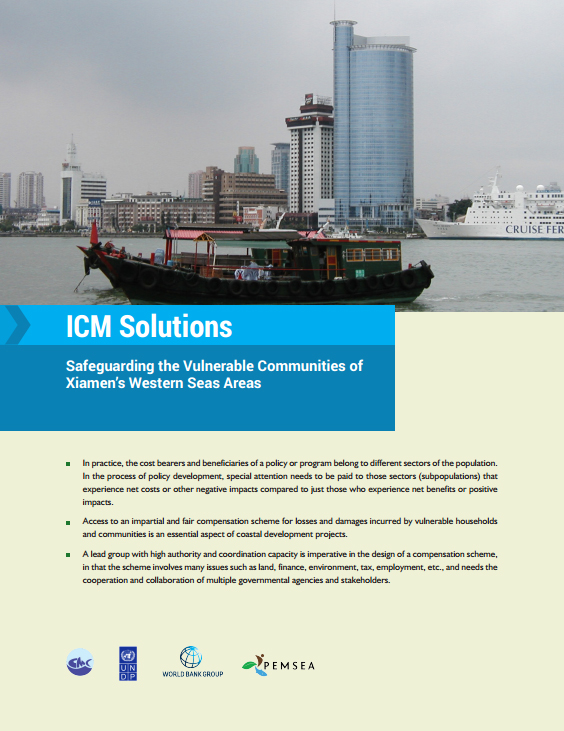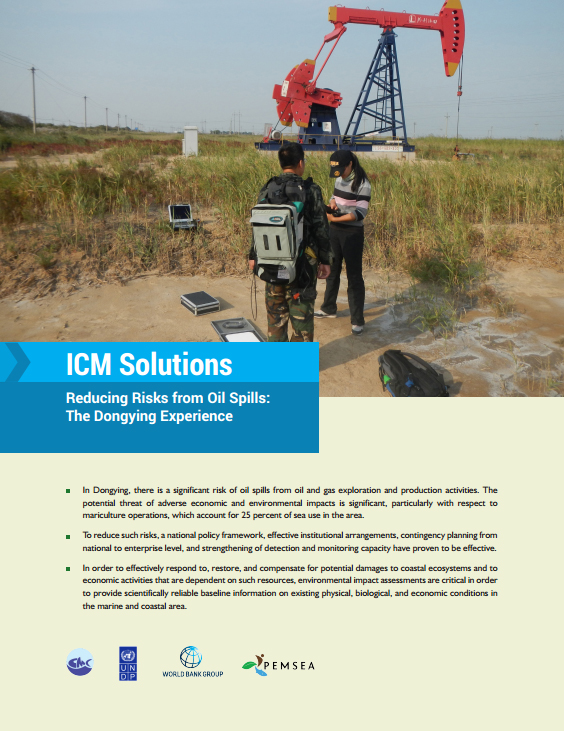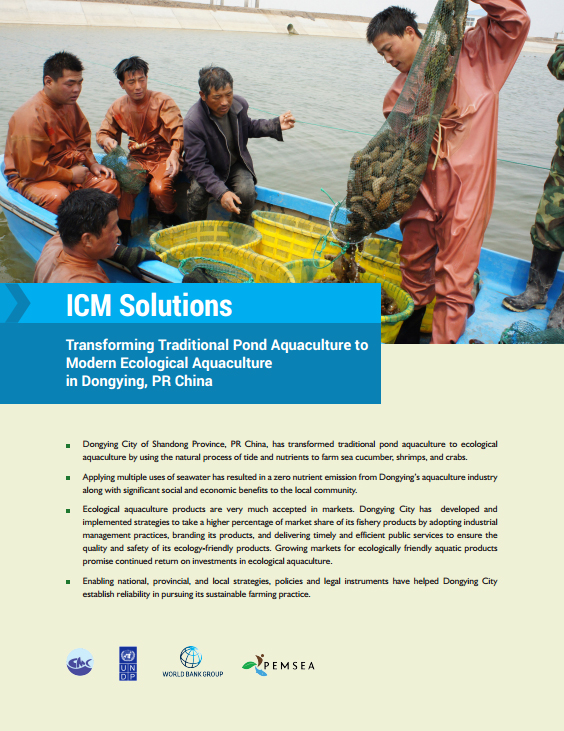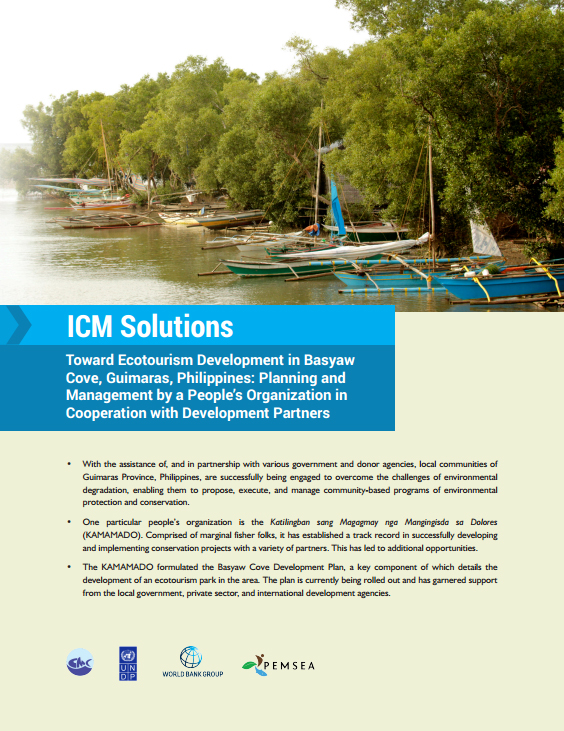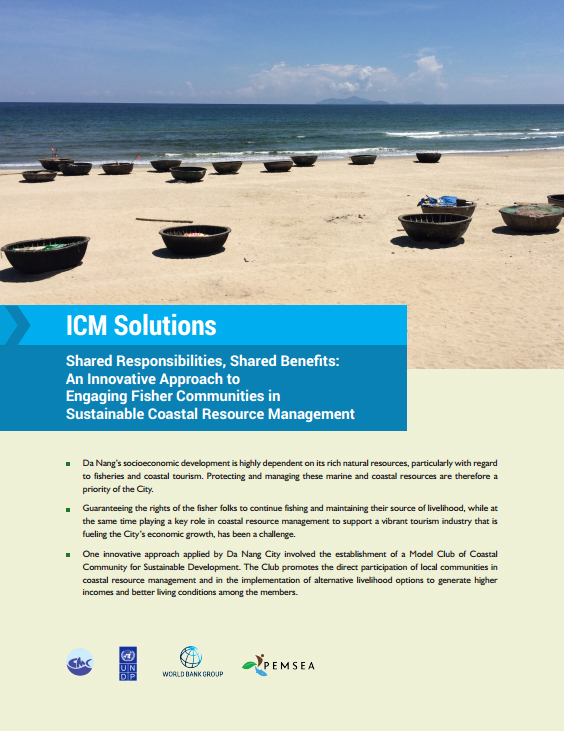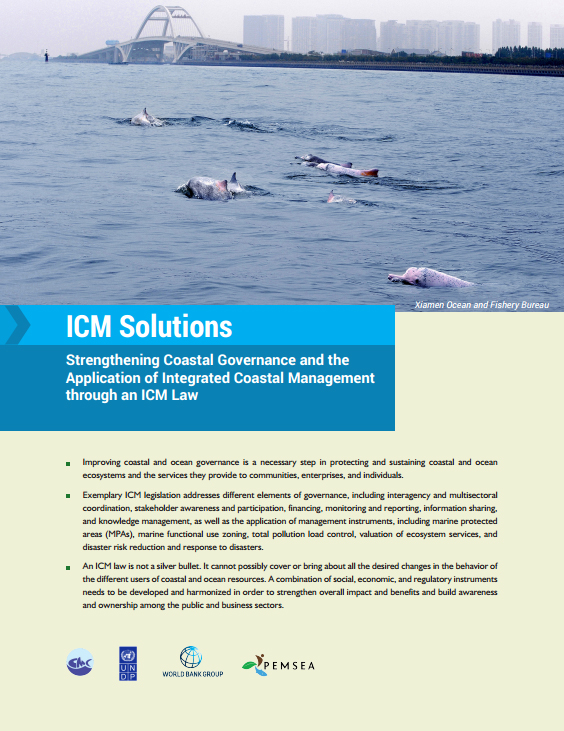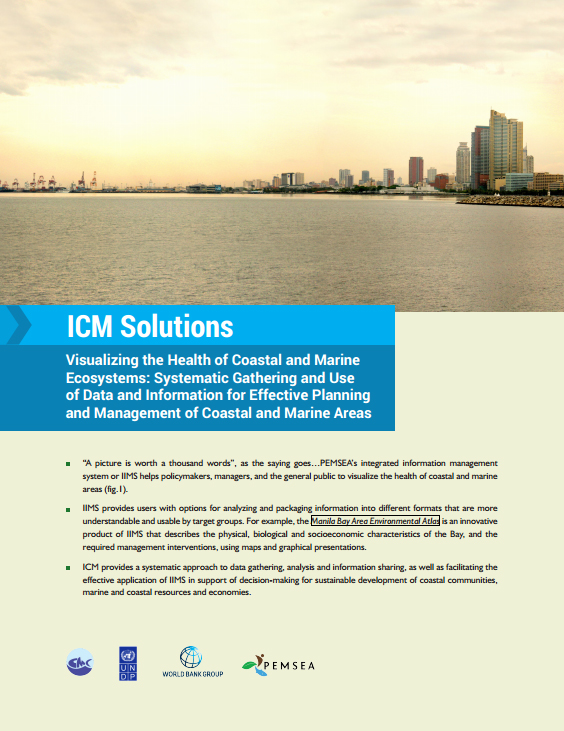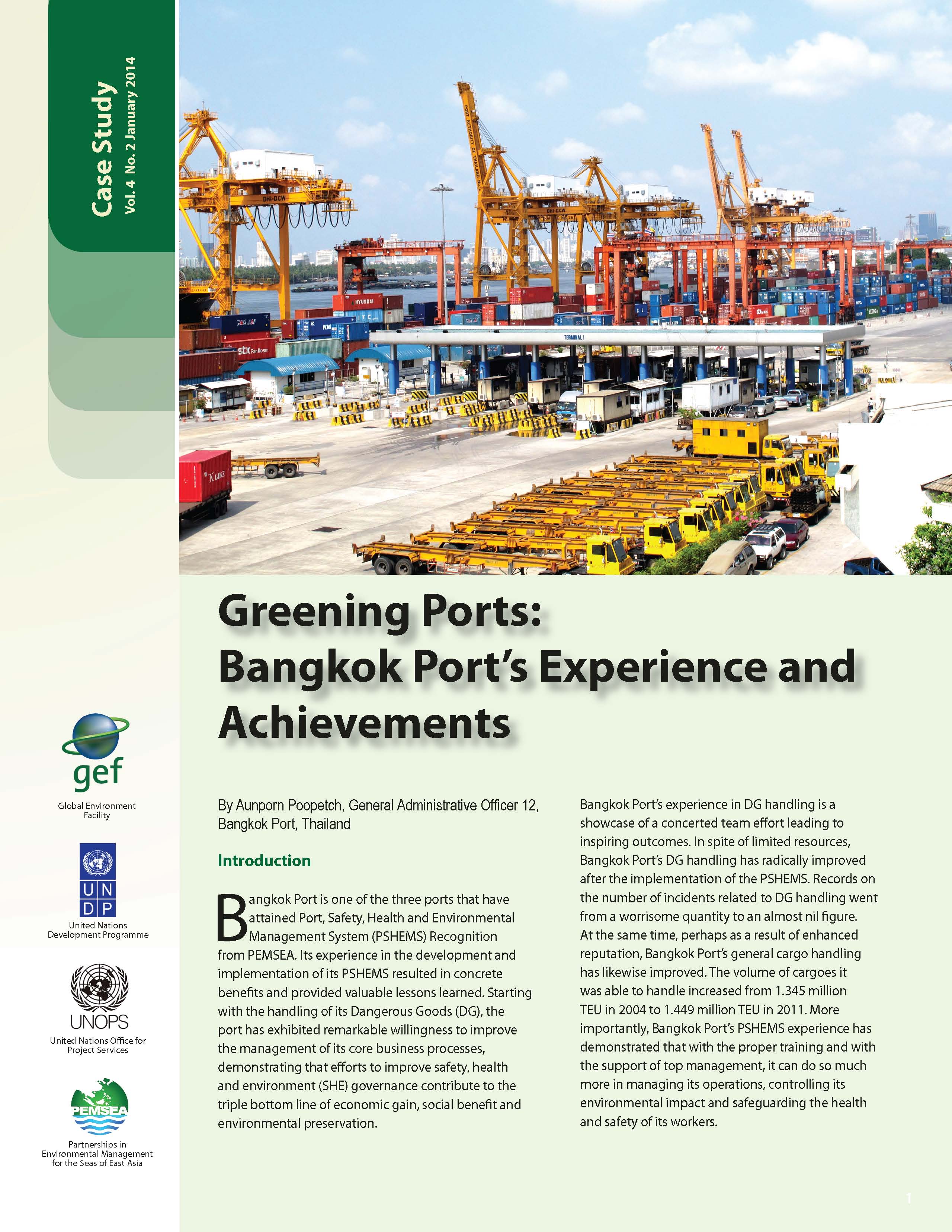
Breadcrumb
Safeguarding the Vulnerable Communities of Xiamen’s Western Seas Areas
According to Xiamen’s Marine Function Zoning Scheme (MFZ) (1997), the dominant functions of the Western Sea Areas (WSA) are port and transportation, while tourism and the protection of endangered species are included as secondary functions. However, at the time most of the sea areas were densely covered by floating cages and oyster rafts, which did not comply with the specified MFZ functions. In order to implement the MFZ, Xiamen City initiated, as a component of its ICM program in 2002, the Integrated Improvement and Management of the Western Sea Areas Program (IIMWSAP).
Print version is available for FREE. Pay only for the shipping cost.
Reducing Risks from Oil Spills: The Dongying Experience
Over the last few decades, the Bohai Sea region (i.e., three provinces and one municipality) has undergone rapid and significant economic development. As of 2010, approximately 20 percent of the country’s population was living in the Bohai Sea region. In addition, the region constituted 6.8 percent of the total area of the country and produced 25 percent of the country’s gross domestic product (GDP).
Print version is available for FREE. Pay only for the shipping cost.
Transforming Traditional Pond Aquaculture to Modern Ecological Aquaculture in Dongying, PR China
In the last three decades, extensive coastal areas along the Yellow River Delta were converted into fish ponds for the cultivation of high value marine commercial species such as shrimps, abalones, and sea cucumbers. Widespread farming techniques required heavy inputs of commercial feeds for shrimp farming or fertilizers to increase benthic algae or primary productivity in abalone and sea cucumber farming. Such aquaculture practices have resulted in wastage of commercial feeds, increased sedimentation, and bacteriological/virological contamination and high concentrations of nutrients in the water column. Collectively, this resulted in a high mortality rate of the farmed animals due to oxygen depletion and diseases from viruses, bacteria and other harmful microorganisms.1,2 Uncontrolled or inadequately controlled application of antibiotics for disease prevention and treatment further contaminated the aquaculture product and posed health concerns to consumers.
Print version is available for FREE. Pay only for the shipping cost.
Toward Ecotourism Development in Basyaw Cove, Guimaras, Philippines: Planning and Management by a People’s Organization in Cooperation with Development Partners
The island province of Guimaras is the youngest and smallest of the six component provinces of the Western Visayas region in the Philippines. Guimaras is composed of five coastal municipalities: Jordan (the provincial capital), Buenavista, Nueva Valencia, Sibunag, and San Lorenzo.
Print version is available for FREE. Pay only for the shipping cost.
Shared Responsibilities, Shared Benefits: An Innovative Approach to Engaging Fisher Communities in Sustainable Coastal Resource Management
ICM implementation in Da Nang started in 2000. It was seen as a means of guiding and supporting the city government in its pursuit of sustainable development, as manifested in Da Nang’s Socioeconomic Development Plan and Environmental City Plan. Over ten years of ICM program implementation have contributed to improving the City’s planning and management capacity including expanding the involvement of civil society in program implementation resulting to better appreciation of the role of communities in environmental protection.
Print version is available for FREE. Pay only for the shipping cost.
Strengthening Coastal Governance and the Application of Integrated Coastal Management through an ICM Law
Xiamen City opened itself to the outside world as a Special Economic Zone (SEZ) in 1981. The subsequent economic upswing coupled with the rapid growth of population and urbanization demanded more jobs, food, energy and living space, among others. Coastal reclamation, aquaculture, ports and shipping (Zhang, et al., 2013) not only brought huge environmental pressure but also yielded conflicts in the use of the sea space (e.g., incompatibilities between fisheries, shipping, coastal engineering, waste disposal, tourism and conservation [PEMSEA, 2009]).
Print version is available for FREE. Pay only for the shipping cost.
Visualizing the Health of Coastal and Marine Ecosystems: Systematic Gathering and Use of Data and Information for Effective Planning and Management of Coastal and Marine Areas
Managing coastal and marine areas and resources entails working with many different social and economic sectors and scientific disciplines. Each sector has its own data and information. Integrated coastal management (ICM) requires access to this wide array of data and information. More importantly, understanding and applying socioeconomic, cultural and natural values, and demography and ecological conditions as input to policymaking and planning are key to a successful program.
Print version is available for FREE. Pay only for the shipping cost.
A Small Venture in Environmental Monitoring Proves a Wise Investment in Batangas Province, Philippines
With the establishment of the ICM program in 1994, the Province of Batangas became aware of the issues and challenges associated with pollution prevention and management. Prior to ICM, monitoring data were fragmented and inconsistent: data came from studies conducted by different academic institutions and private entities. There was no regular monitoring program in the Bay. This proved inadequate for determining the environmental conditions in the Bay, inputs into planning and decision making for development of the Bay, and benchmarks to compare changes that occur as a consequence of the developments and management interventions.
Greening Ports: Bangkok Port’s Experience and Achievements
Bangkok Port is one of the three ports that have attained Port, Safety, Health and Environmental Management System (PSHEMS) Recognition from PEMSEA. Its experience in the development and implementation of its PSHEMS resulted in concrete benefits and provided valuable lessons learned. Starting with the handling of its Dangerous Goods (DG), the port has exhibited remarkable willingness to improve the management of its core business processes, demonstrating that efforts to improve safety, health and environment (SHE) governance contribute to the triple bottom line of economic gain, social benefit and environmental preservation. The preparation of this case study was supported by the Yeosu Project and Expo 2012 Yeosu Korea, and the Korea International Cooperation Agency (KOICA).
Print version is available for FREE. Pay only for the shipping cost.
